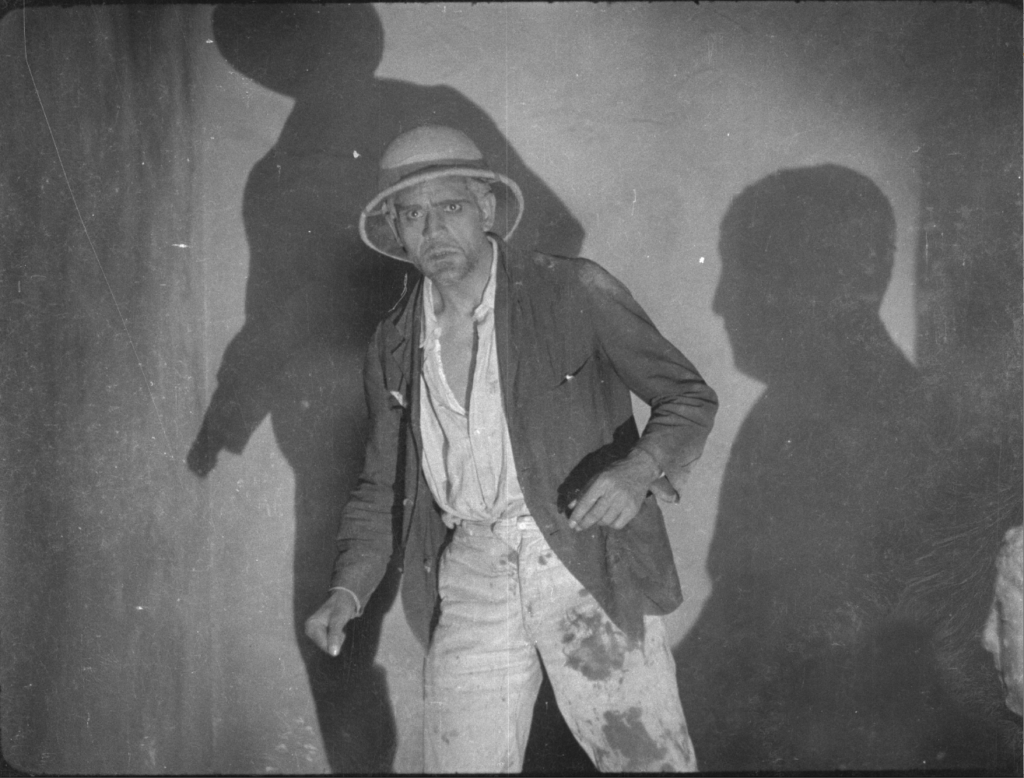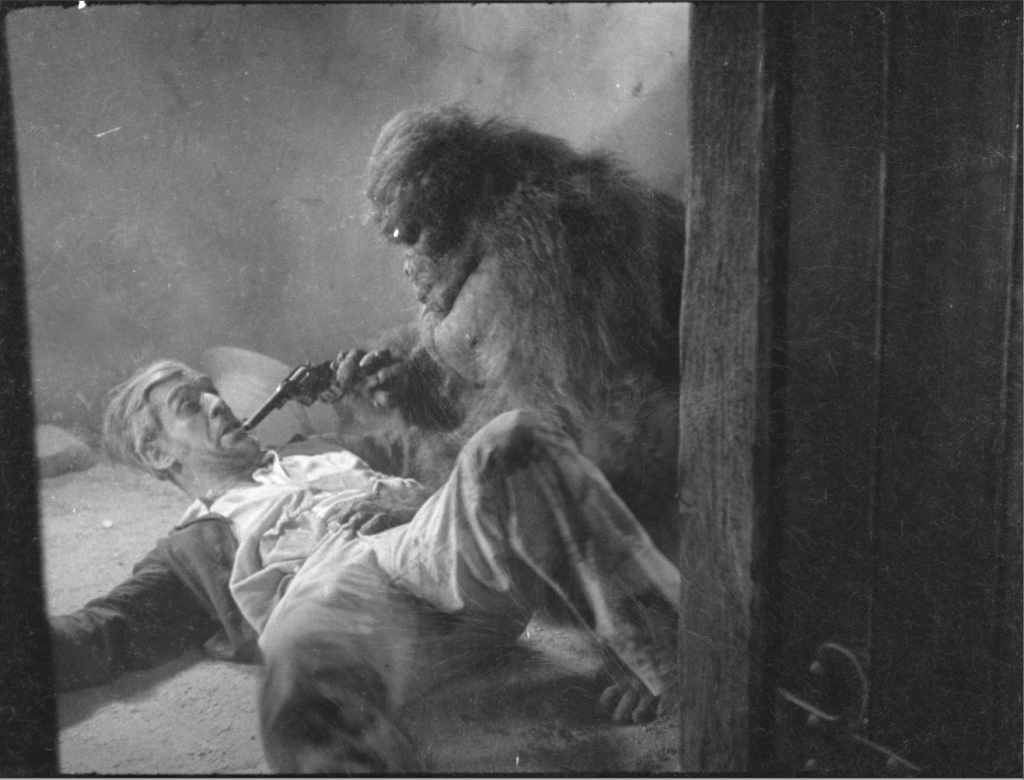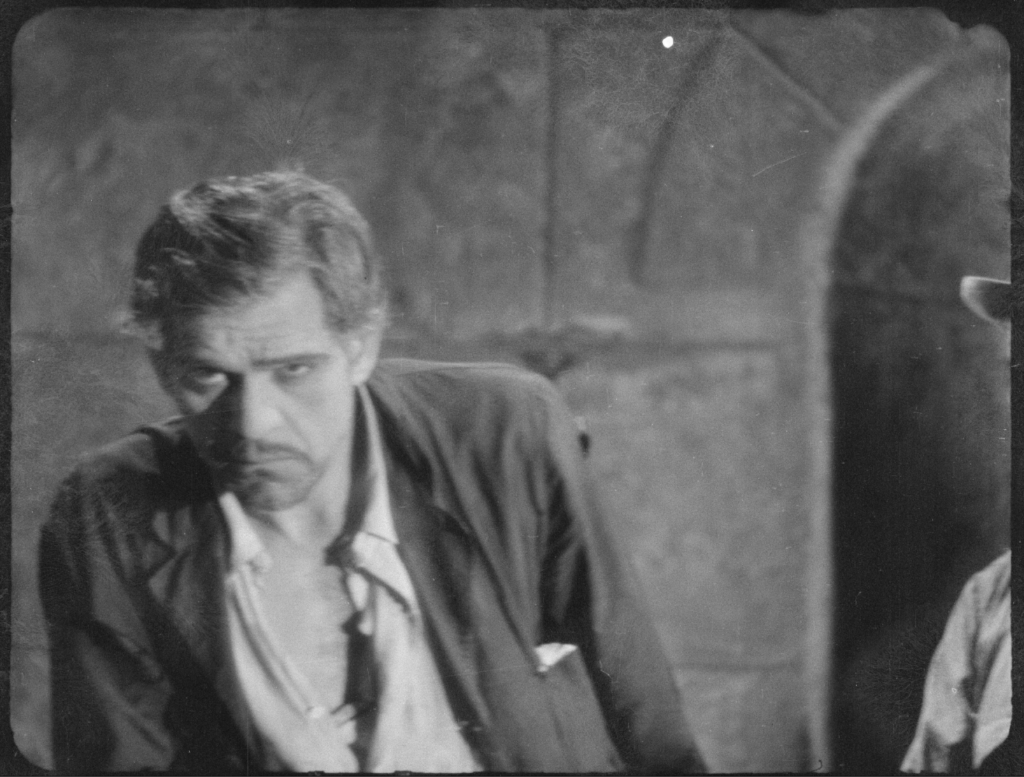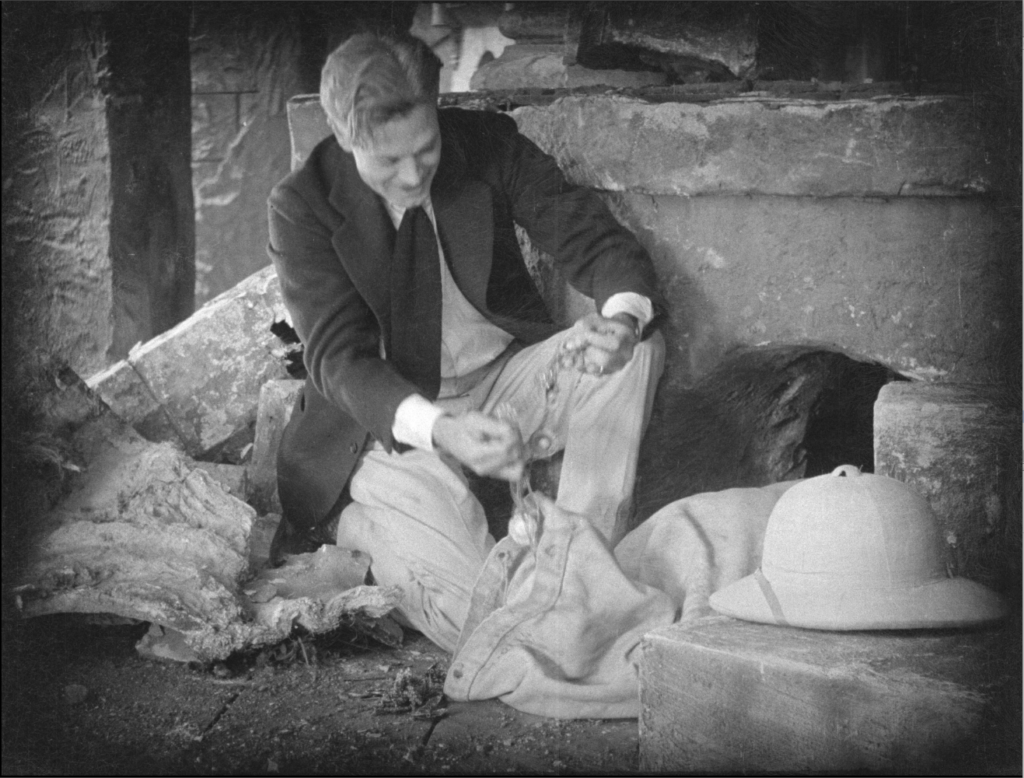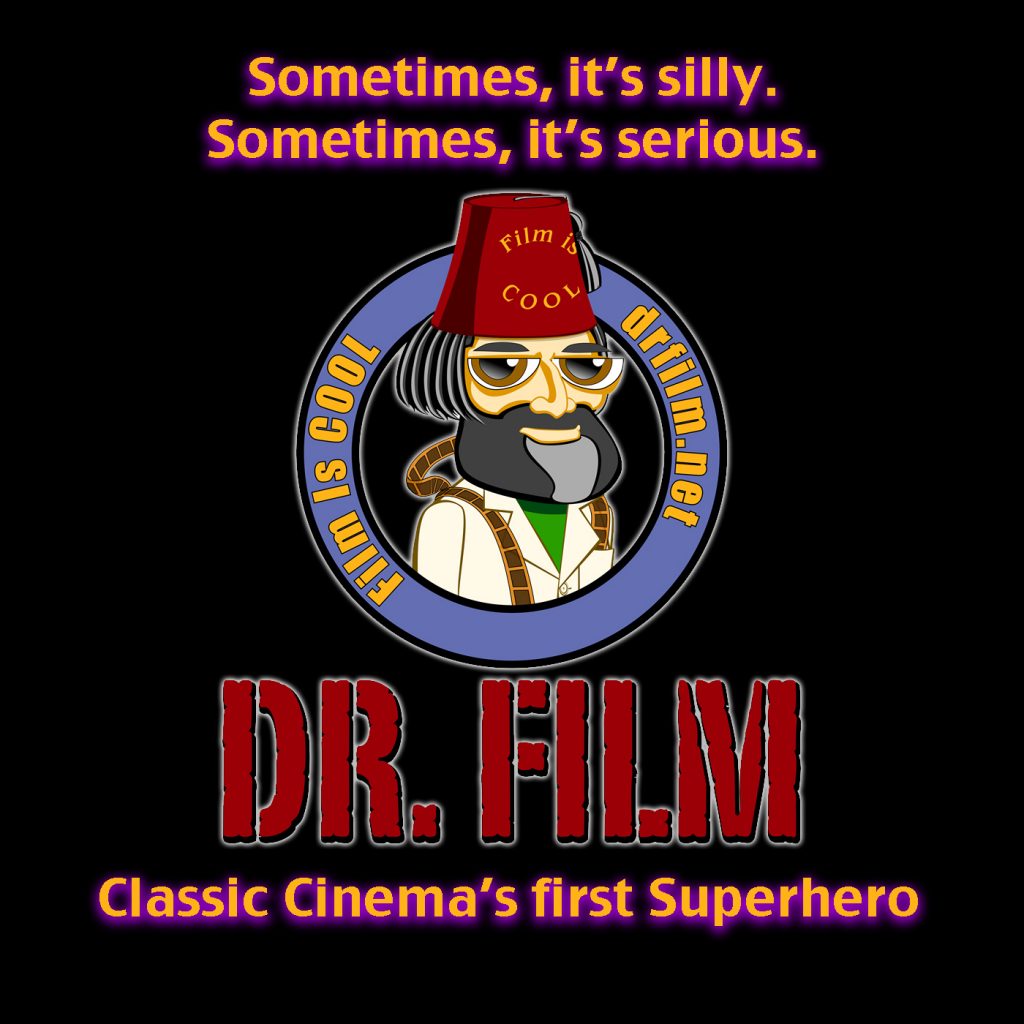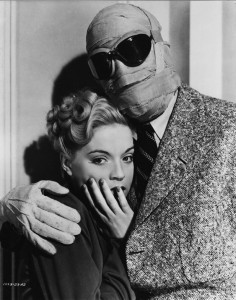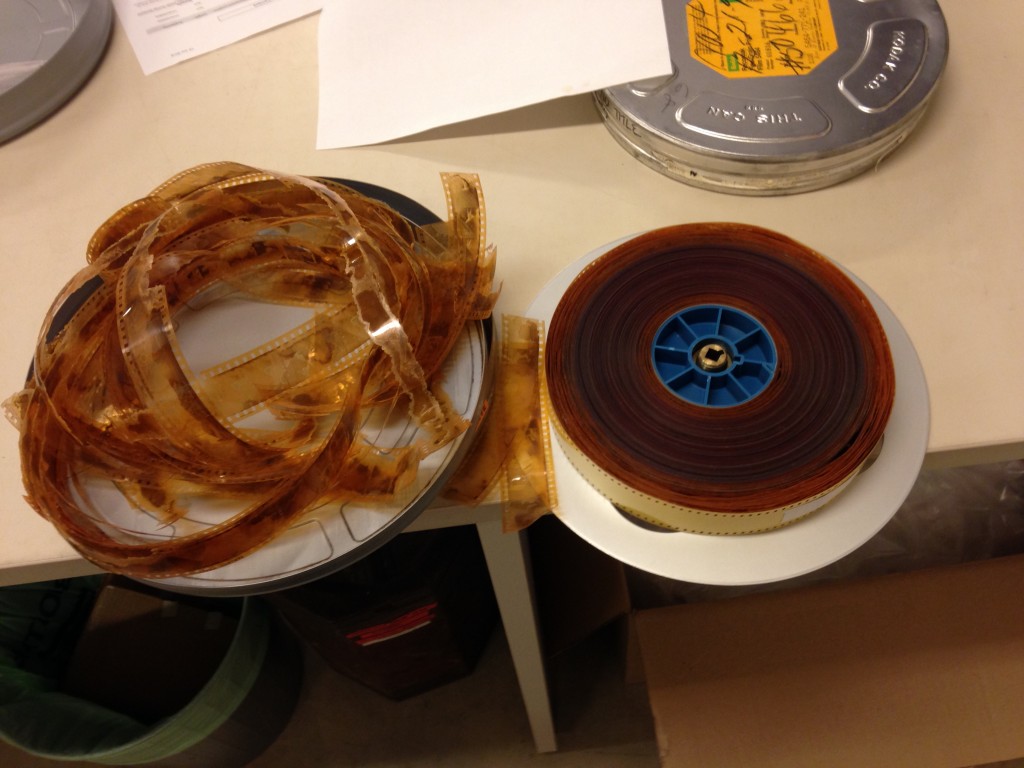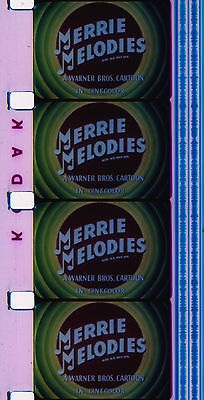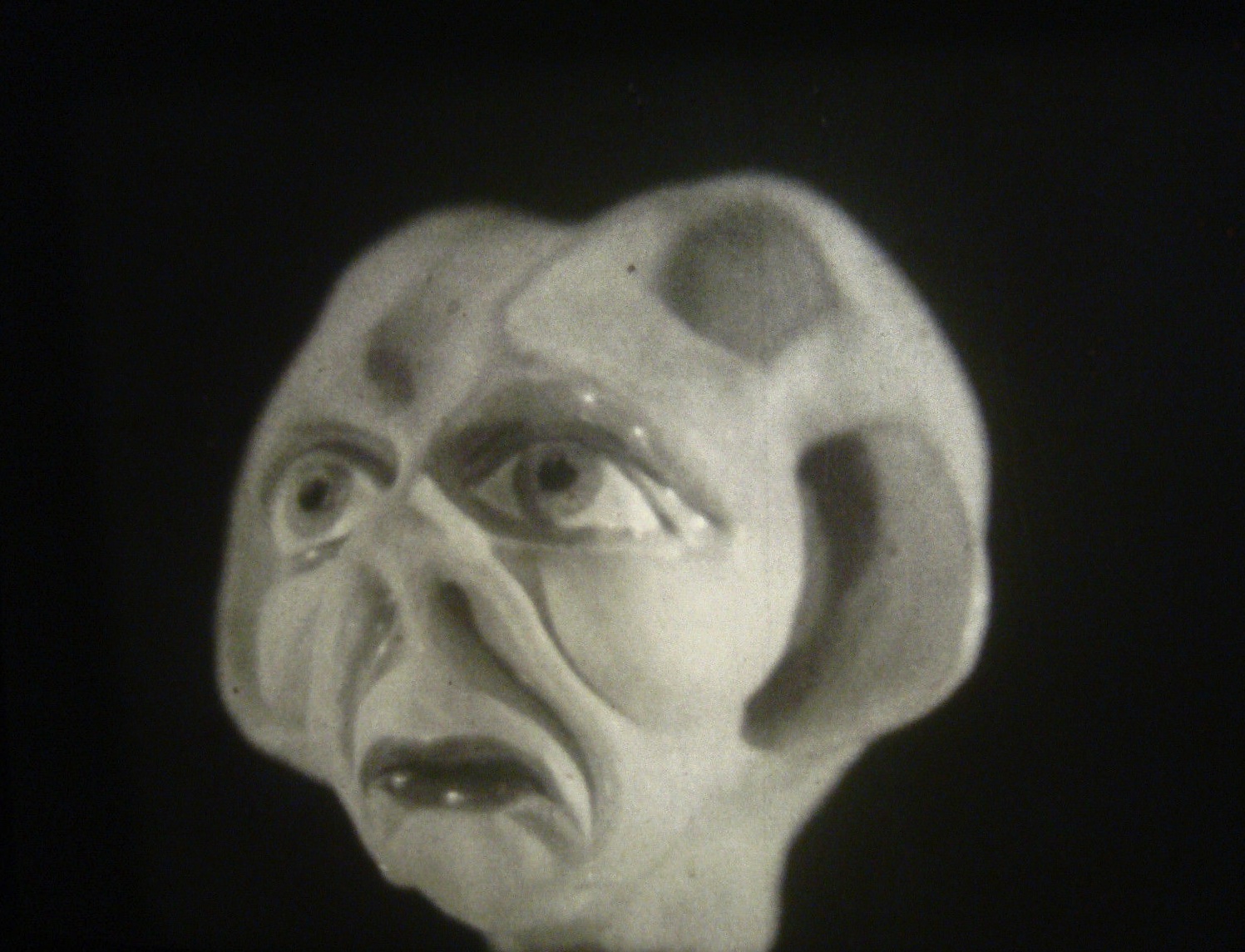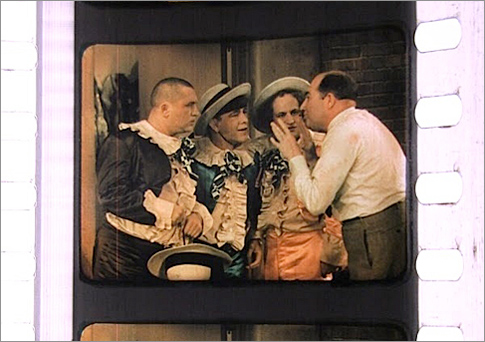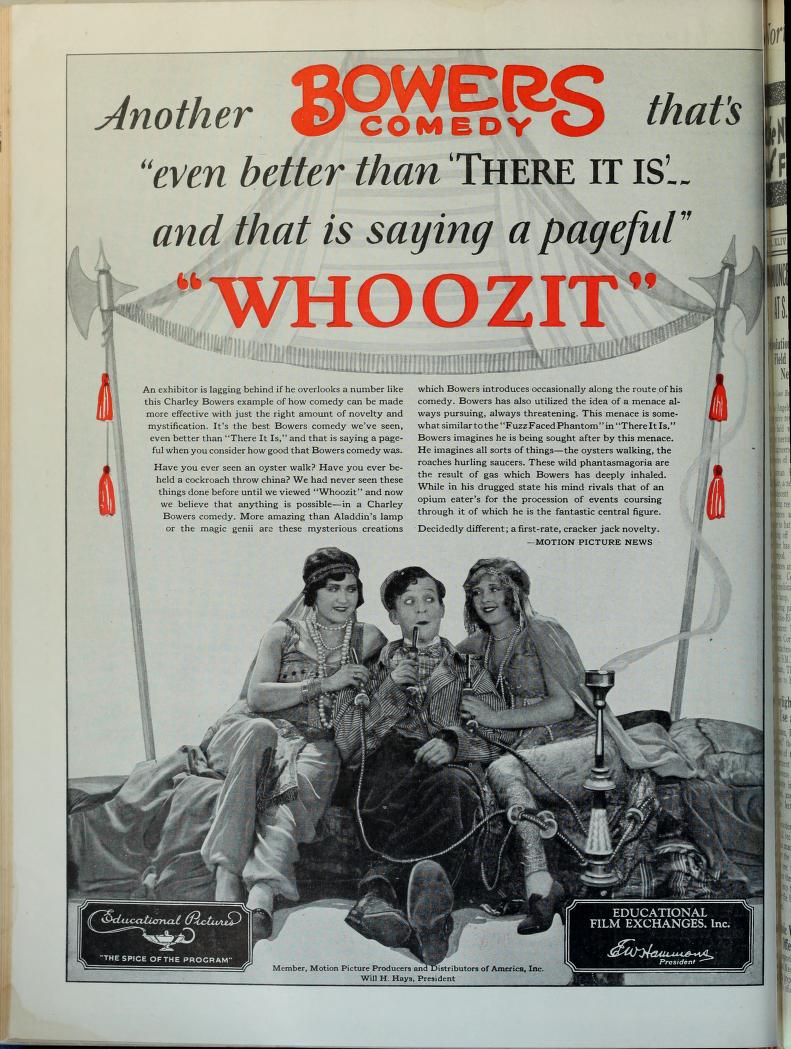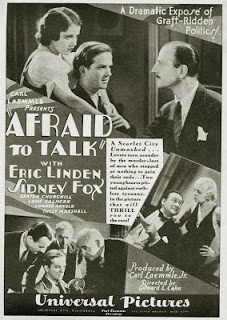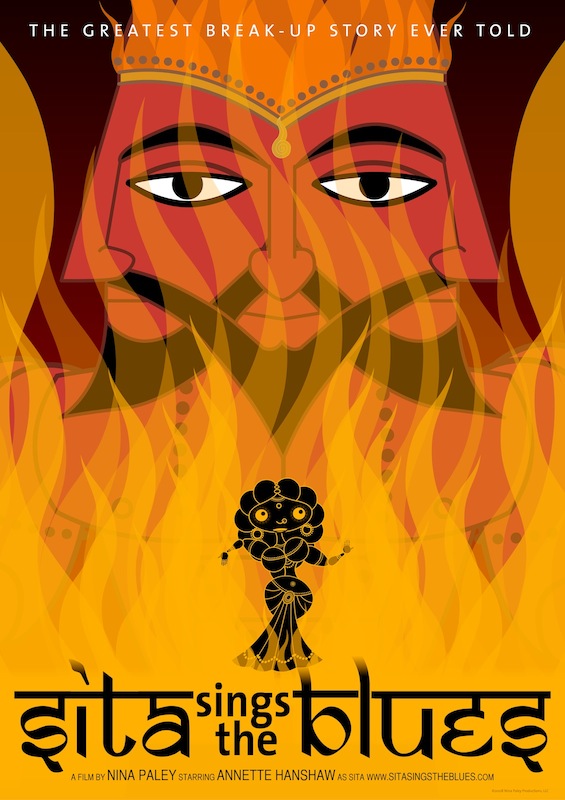I touched on this a little in my newsletter, and if you didn’t see that, then you’ll want to sign up for it by emailing me. No, it’s not on my website yet. I know it needs to be.
A good friend of mine who runs a candy shop told me that he was at an impasse once. He either needed to expand his business or close down. I know exactly what he meant. If that intrigues you, keep reading.
Some of you have complained about my blogs on these topics and called them “existential whining,” and if you’re in that camp, go ahead and skip this one because it’s going to be one of those. On the other hand, many of you follow this just to see the struggles and successes of a guy who does this work.
I have been trying to figure out just why I am not being very successful doing film restorations. Tommy Stathes ships my products, and he’ll be the first to tell you he’d like to move some of my stuff out of his cramped apartment.
I’ve gotta tell ya, I was super disappointed in the turnout I got for the free movies I did during the early part of the pandemic. I was getting 20 and 30 viewers for some and 80-90 at the best. I don’t think we ever topped 100. Then, Ben Model keeps posting that he’s getting 1000 or more! You’ve gotta hand it to Ben. He’s been doing the longest-running free movie show during the pandemic, and people love it. This was my big clue that I must be doing something wrong! I mean, for heaven’s sake, I’m doing free movies, and rare stuff, during a pandemic, and I can’t get any views? I was hoping to do a public service by doing these shows, and I thought they were good, but I eventually suspended them because they were literally more work than they were worth. They weren’t helping my “brand,” I wasn’t getting donations, and it was taking time away from projects that DO pay.
So instead of becoming insanely jealous of Ben, which is tempting, I did what Ben does. When Ben has a technical question, he sends me an email asking about it. I’m probably a good guy to consult with technical problems (especially if you want a long-winded answer.)
But you should never ask me about marketing problems. Because I’m a marketing moron. I consulted Ben, who is a Marketing Genius! and asked him for some tips. (In fairness, although Ben is really good at this, I’m way behind the curve on this kind of thing, so you can’t expect me to pull out of a dive immediately. My failures are my own, so don’t blame Ben for my goofiness.)
Ben steered me to Seth Godin, a marketing legend, and to Michael Boezi, who does his own podcast. Now, I am frequently in the car and listen to podcasts (now even more often because I am shuttling disks between helpers working on my projects). I started reading Godin’s blog, and I will freely admit that Godin annoys me.
I’m an engineer. We deal in facts. We want concrete answers. You know, science. Godin’s blog is all, RAH, RAH, you can do this! Well, I don’t need RAH RAH, I need ideas!!! If there are concrete ideas in there somewhere, I’ve missed them, because I got lost in the cheerleading. I gave up. (I should probably reconsider this at some point… Godin annoyed me a lot less than Michael Bay has with his awful movies.)
I did a Godin spoof on my podcast. (Please note that I also spoof ME a lot, which is one of my saving graces… like WC Fields, I make fun of everyone; no one is immune.) Still, Boezi kind of crept in to my brain. Remember, as an engineer, I have a pre-trained bias against marketing. It’s not science: it’s squishy social stuff. In fact, one of the guys who was helping me told me that I was a disloyal engineer for even listening to such a thing. Marketing people, in his view, are evil. They’re all Herb Tarlek.
What I like about Boezi is that he does have a fair number of concrete ideas. I would say there’s a fairly low signal to noise ratio (translation for non-geeks: there’s not much content I find usable per episode), but that’s mostly because no one else really does quite what I do.
Wait, I hear you cry. There are surely others. Well, sorta. I do high-end restorations at 2 and 4K. Many of them go back to archival film! I go overboard on it. I focus on stuff that’s not out there, terribly damaged, or incomplete, and I do in-depth restorations of things I think are cool. In other words, if I don’t do it, it will never happen. I know that I’m the only independent consultant goofy enough to go for National Film Preservation Foundation grants. How do I know this? They told me. Yes, I’m nuts!
This is my take-away from listening to a bunch of shows, consulting with a bunch of people, and thinking a lot:
I need more product out there. I know that I need more stuff to sell, but for one reason or another, it hasn’t happened. This ridiculous King of the Kongo project has been on-again off-again for 8 years. I have more projects than I can count that ALMOST happened, and I had literally given up on Kongo when Steve Stanchfield convinced me to go for it one last time. I then thought that all my grant prospects had fallen through, but I swung for the fences and got it. Now I’m obligated to finish it and all my other projects are on the back burner. For notes on which projects I have going, see the end notes here.
I should blog more often and make them shorter. Well, good luck on that. I don’t think in sound bites, and I don’t write short blogs. I think about things. It’s like when Hitchcock was pressured to use a pop score for Torn Curtain, and Bernard Herrmann told him, “I don’t write pop scores. You don’t make pop movies.” If you want two-paragraph platitudes, I recommend Seth Godin’s blog.
I should do more podcasts and make them longer. (Irony noted that my blogs are seen as too long and podcasts seen as too short!) The podcast is something I’ve seriously thought about discontinuing, and I have great trouble doing them regularly, but some of you really like them. Oddly, the ones that get listeners are the ones that I do that cover stupid goofy stuff. We sorta morphed into old-time radio sorts of things and both Glory and I enjoy that. I guess the six of you who listen to these do, too. The “straight” podcasts get about half the listeners (yeah, three). No, seriously, we get maybe 50-75 listeners for an episode, which isn’t fantastic, but not bad. The one thing I can say that is somewhat encouraging is that we do distinguish ourselves by making a podcast unlike any other film podcast. Someone called it “the weirdest film podcast on the web!” Who else would have a spoof of 2001 or an episode with Claude Rains playing a satanic lawyer? We do.
My website needs re-tooling. This is a fair call. Boezi has several good ideas about optimizing web sites, none of which I’ve implemented. I last updated my site a year or two ago, after learning that my text-heavy site alienated viewers. (Just like my text-heavy blogs.) I’m currently re-thinking this.
I need an email newsletter. Ok, I hate email newsletters. As I said in my first one, they always seem like they’re trying to sell me something and I HATE that. I struggled a lot with doing a soft-sell one and I think I did it OK. Of course, it was probably too soft-sell because I sold zero products! But I get that it’s important for a lot of reasons, so we’ll do it.
I should sell stuff directly from my web site. I agree. My opinion of Amazon would not be fit for a blog that is supposed to be PG. It might not even fit into an R-rated blog. I don’t like them at all. I will do this.
I take on too much work myself and need helpers. Boy have I learned that this year. Now I have two helpers. But the problem is I can’t pay them anything. I also learned that I need an uber-macho computer, so what I did was buy these guys fast computers with grant money and then have them pay the grant back in work. It’s going OK. The backlash here is that I need to do more work than I can pay for or that sales justify, so I’m looking at forming a non-profit.
My own self-assessments have proven wrong and that continues. I was thinking that I was a total loser at this stuff and had screwed up everything I’d tried. I also thought I was reaching a sum total of NO ONE and that people didn’t really care about my work. What’s been very touching this year is the outpouring of support I’ve gotten from a lot of you, including some cash (blush) that I didn’t expect. (I should probably do a whole blog post on this. I did an outdoor movie show and a woman came up to me, crying, thanking me for bringing my movie shows back. It was one of the most beautiful experiences I’ve had this year.) I have also learned that a lot of people have trouble setting up web sites, Amazon stores, blogs, and podcasts. Well, I’ve DONE all that.
It’s just that I built it and no one came. I’ve got to fix that. I’ll work on it. The upshot of the candy store analogy is that I realize now that I’m not really successful here, so either I have to finish Kongo and hang it up, or I need to get some funding to have 3-4 people helping me. Like the candy store, I have to either expand or close.
Now, just FWIW, here’s a partial list of stuff that I couldn’t get off the ground before Kongo:
The White Tiger (1923) I wanted to merge my print with UCLA’s. No traction with UCLA. Universal did it recently, probably without my print. I had mine scanned for archival use and nothing happened. Thanks, UCLA.
Rocky Jones Lost Pilot (1951) I scanned this. We only have 2 of 3 reels, but it’s cool. I’m hoping to get a 3rd helper to get this out for me.
Willis O’Brien shorts (1915-30). I love these and they’re hard to find. Got them scanned, no time to clean up at this point. Considering skipping them: this got the lowest rating of any of the shows I did, even with brand new scores. Sometimes you guys don’t love the same stuff that I love!
Lupino Lane shorts (1920s). This ALLLLMOST happened. I was planning to collaborate with Dave Glass on this right before Kongo showed up and then I couldn’t do it. Some of the prints are warped in such a way that I can’t easily fix them. I still have a bunch and it’s near the top of the list.
Ella Cinders (1926) this has never been put on Blu-ray in a good way. I tracked several prints (original Kodascopes) and was arranging to have them scanned. I’ve also found some stills and the original score. I think we could do a decent reconstruction of what this was including missing footage. No budget, no time.
Alice in Wonderland/The Horror (1931/3). Several people are pestering me about this. I was about to get Alice scanned before the pandemic started, but we ran out of time. There’s also a print of Intolerance of 1933 at MoMA which would be a perfect thing for triple feature. All Bud Pollard, one of the most bizarre filmmakers ever.
Thunder Over Texas/I Can’t Escape (1934/3) Edgar Ulmer double feature! Immediately before the pandemic, I had Thunder scanned, but I will need another print because some of it was warped fairly badly and didn’t scan well. We had most of I Can’t Escape scanned, but not quite ready.
Dynamite Dan/The Midnight Girl (1924/5) Karloff and Lugosi before sound! I commissioned a new score for Dynamite Dan (Kodascope) and I was never able to get Midnight Girl scanned. I think this would be a cool one.
So you see, I had a lot of irons in the fire. They just all got cold!

